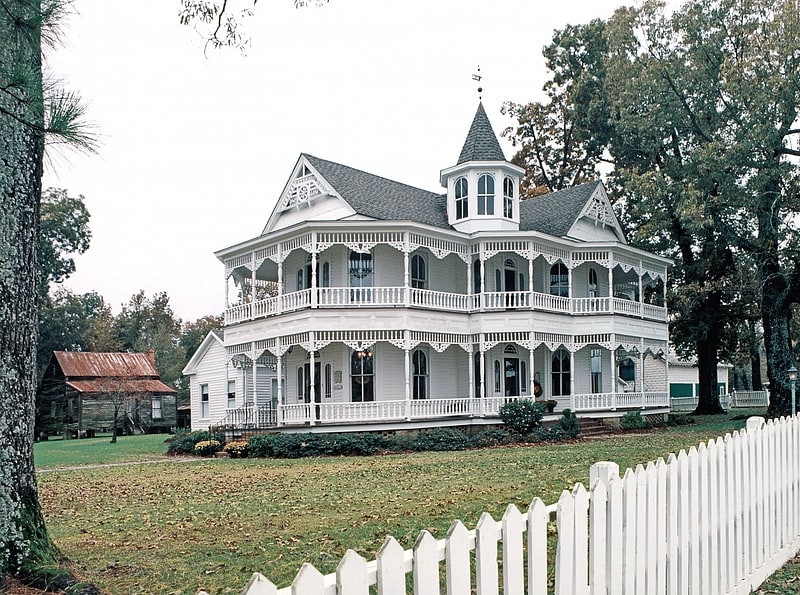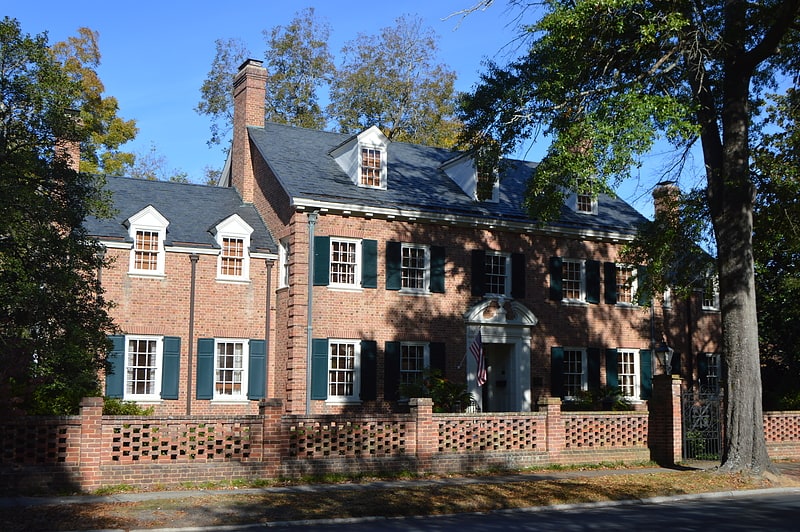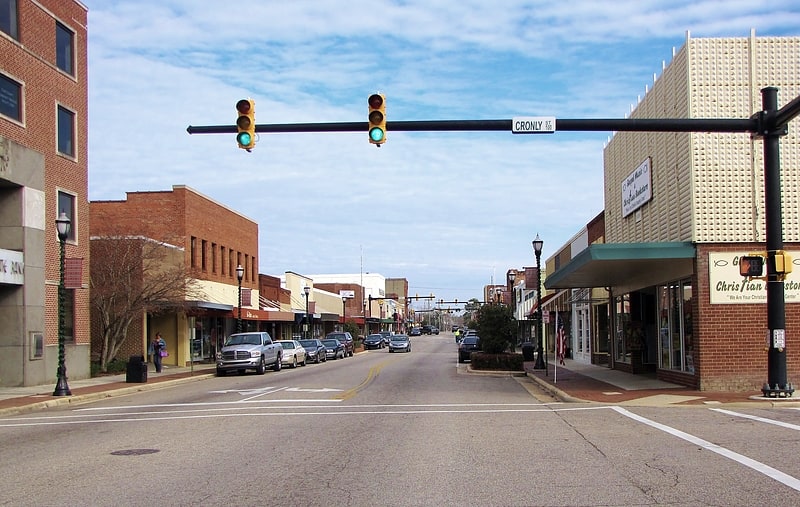Discover 4 hidden attractions, cool sights, and unusual things to do in Laurinburg (United States). Don't miss out on these must-see attractions: John Blue House, E. Hervey Evans House, and Central School. Also, be sure to include Laurinburg Commercial Historic District in your itinerary.
Below, you can find the list of the most amazing places you should visit in Laurinburg (North Carolina).
Table of Contents
John Blue House

John Blue House in Laurinburg, North Carolina was built in 1895. It was listed on the National Register of Historic Places in 1978.
A unique example of Steamboat Gothic architecture, the John Blue House provides a glimpse into the past of the rural Carolinas. The home features 12 exterior doors, each with its own stained glass light above. The house has nine fireplaces and rare double circular porches.
The surrounding grounds include a grove of pecan trees and a collection of structures that tell the story of a different time in the region. These structures include, three authentic log cabins, a restored pre-Civil War cotton gin, and a restored country store.
The grounds are always open and are used to host numerous festivals throughout the year; most notably the Storytelling Festival of Carolina, the Scotland County Highland Games and the John Blue Cotton Festival.
John Blue Cotton Festival -- The John Blue Cotton Festival is held the second weekend of October. It traditionally draws over 10,000 visitors. This "old timey" event features crafts, antique collections, "hit and miss" engines, entertainment, food, and demonstrations of 19th century games and farming practices.[1]
Address: 13040 X Way Rd, 28352-1954 Laurinburg
E. Hervey Evans House

E. Hervey Evans House, also known as Thomas Walton Manor, is a historic home located at Laurinburg, Scotland County, North Carolina. It was built in 1939, and is a 10,000-square-foot, Georgian Revival style brick dwelling set in gardens designed by noted landscape architect Charles Gillette. It consists of a 2+1⁄2-story, central five-bay block flanked by two recessed, symmetrical, two-bay, 1+1⁄2-story wings. Also on the property are the contributing three-car garage, smokehouse, brick wall, and the surrounding gardens.
It was added to the National Register of Historic Places in 2006.[2]
Central School

The Central School, also known as Laurinburg Graded School, is a historic school building located at Laurinburg, Scotland County, North Carolina. The original section was designed by architect Oliver Duke Wheeler and built in 1909–1910. It is a two-story, brick building in Neoclassical style. The main entrance features a prominent central portico with four Doric order columns. Two-story flanking wings were added in 1939, and additions to the wings were made in 1948 and 1949 and designed by Leslie Boney. The school closed in 2000.
It was listed on the National Register of Historic Places in 2005.[3]
Laurinburg Commercial Historic District

Laurinburg Commercial Historic District is a national historic district located at Laurinburg, Scotland County, North Carolina. The district encompasses 51 contributing buildings and 2 contributing structures in the central business district of Laurinburg. They were built between about 1893 and 1953 and include notable examples of Streamline Moderne and Art Deco architecture. Notable buildings include the Central Hotel, McDougald's Furniture Store and Funeral Parlor, Everington's Drug Store, Scotland Pharmacy, U.S. Post Office designed by the Office of the Supervising Architect under Louis A. Simon and built by the Federal Works Administration, First United Methodist Church, Hammond Company Building, and Winn Dixie Grocery Store.
It was added to the National Register of Historic Places in 2003.[4]